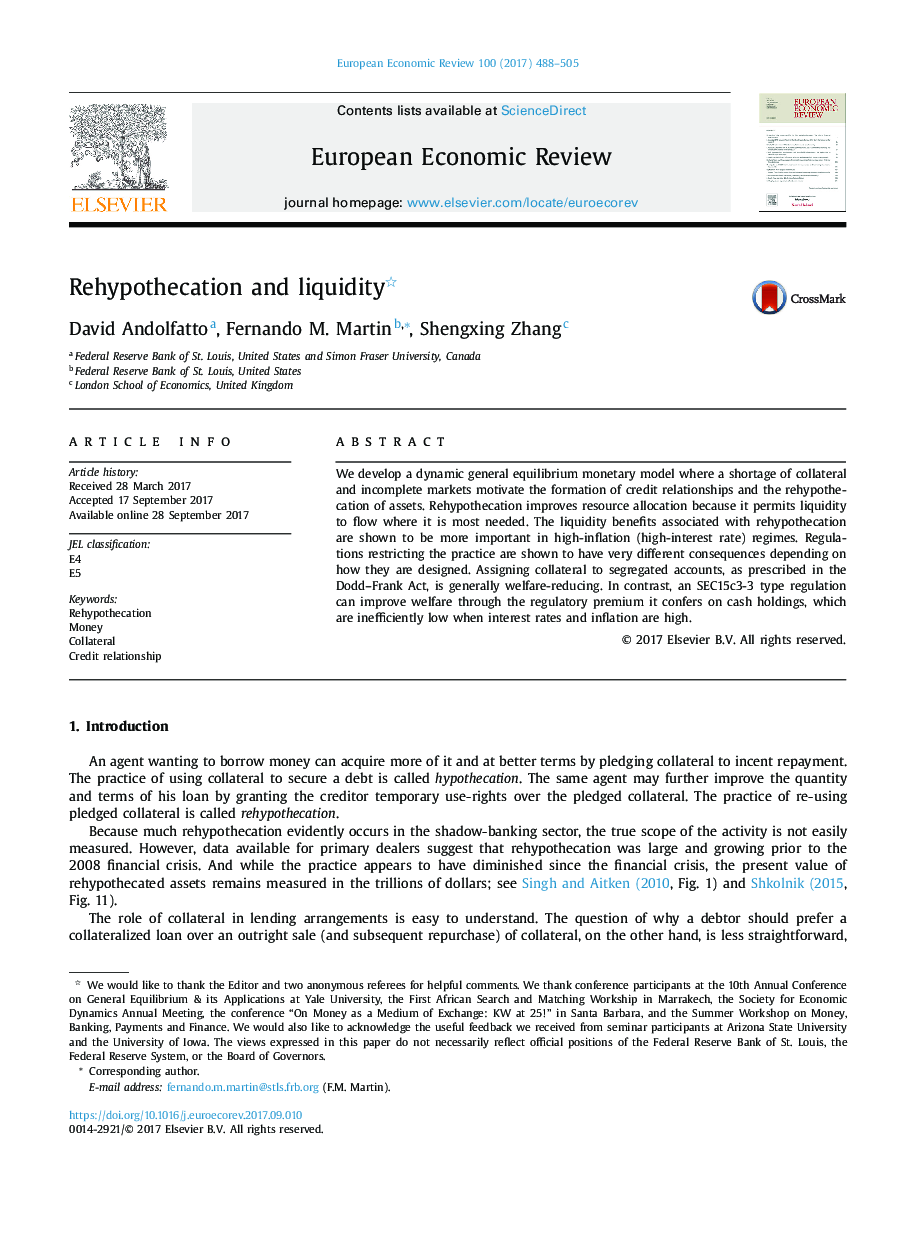| Article ID | Journal | Published Year | Pages | File Type |
|---|---|---|---|---|
| 5066253 | European Economic Review | 2017 | 18 Pages |
We develop a dynamic general equilibrium monetary model where a shortage of collateral and incomplete markets motivate the formation of credit relationships and the rehypothecation of assets. Rehypothecation improves resource allocation because it permits liquidity to flow where it is most needed. The liquidity benefits associated with rehypothecation are shown to be more important in high-inflation (high-interest rate) regimes. Regulations restricting the practice are shown to have very different consequences depending on how they are designed. Assigning collateral to segregated accounts, as prescribed in the Dodd-Frank Act, is generally welfare-reducing. In contrast, an SEC15c3-3 type regulation can improve welfare through the regulatory premium it confers on cash holdings, which are inefficiently low when interest rates and inflation are high.
